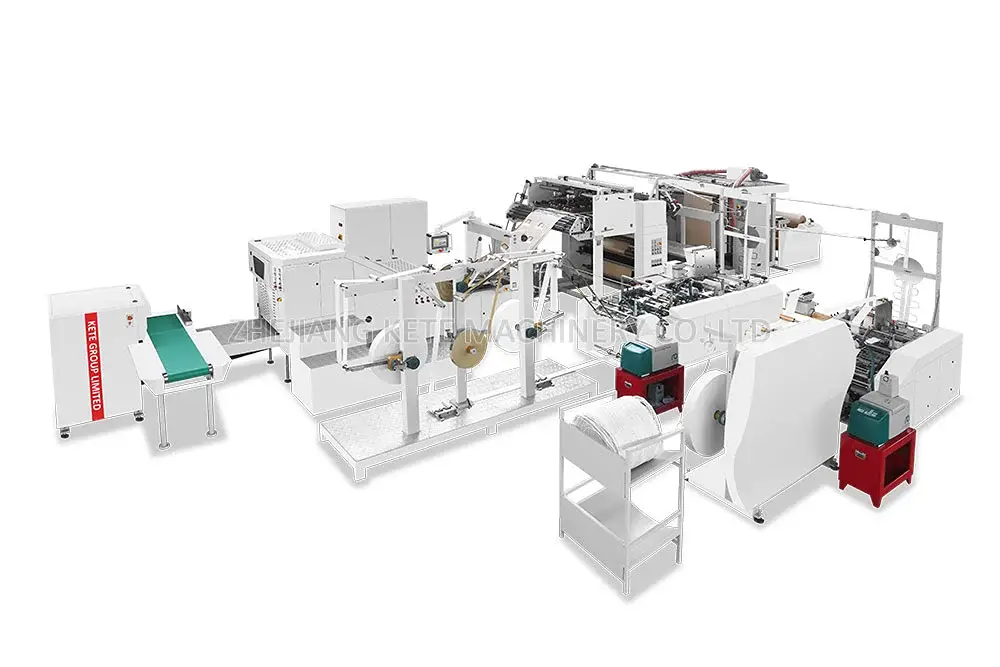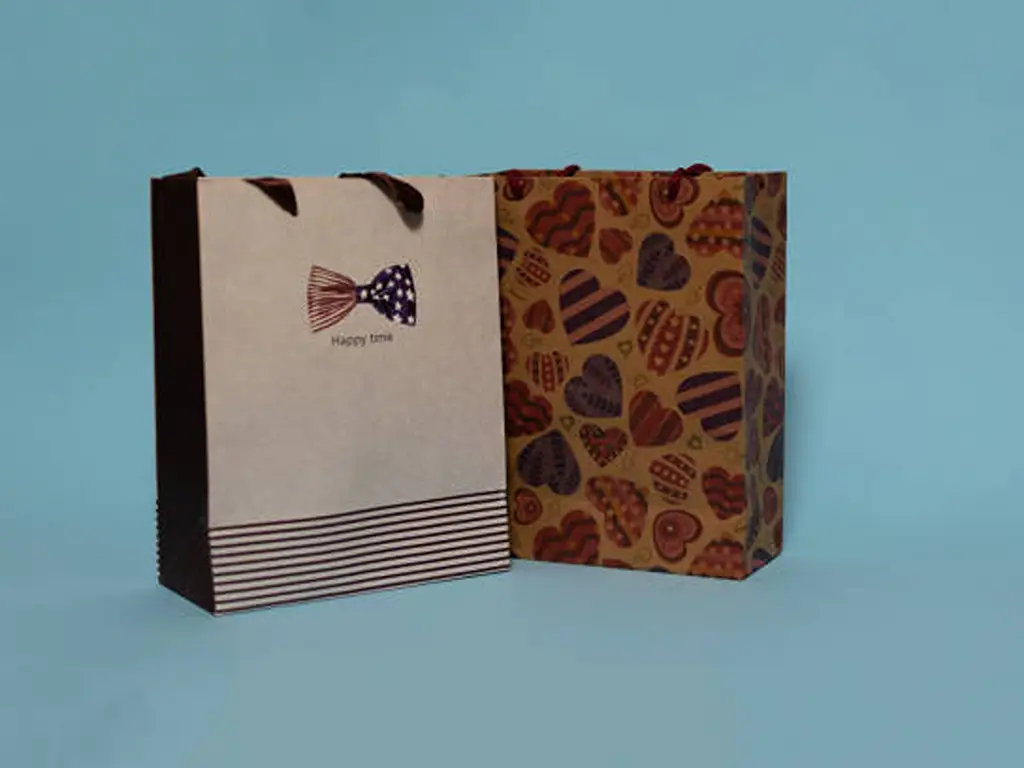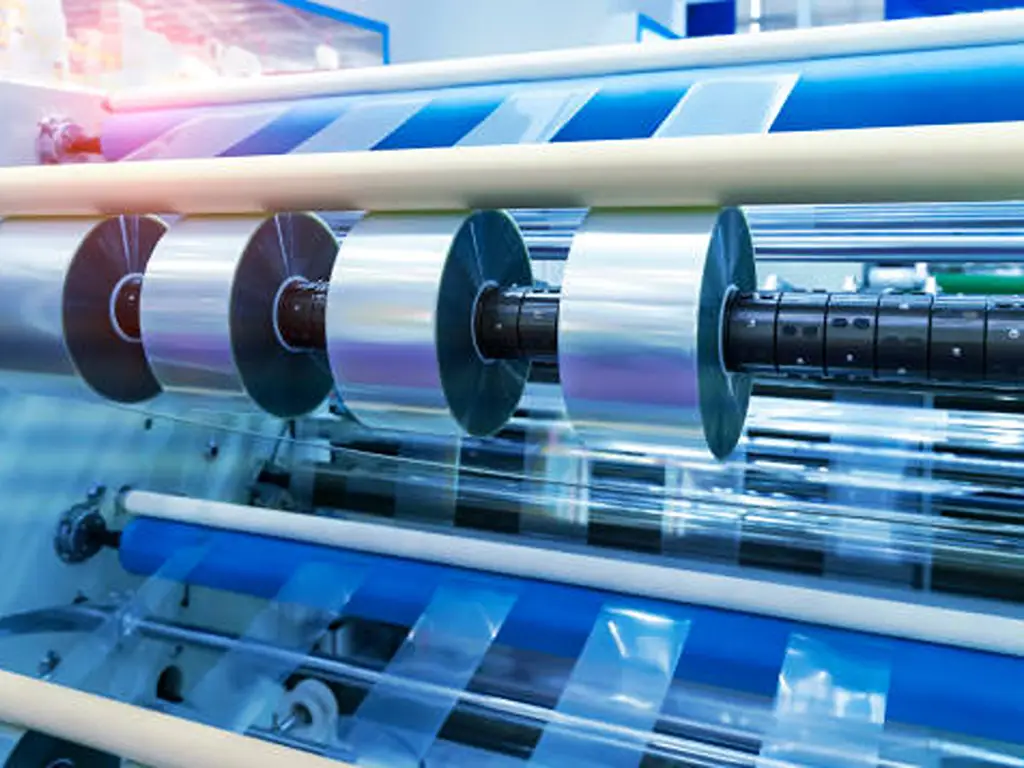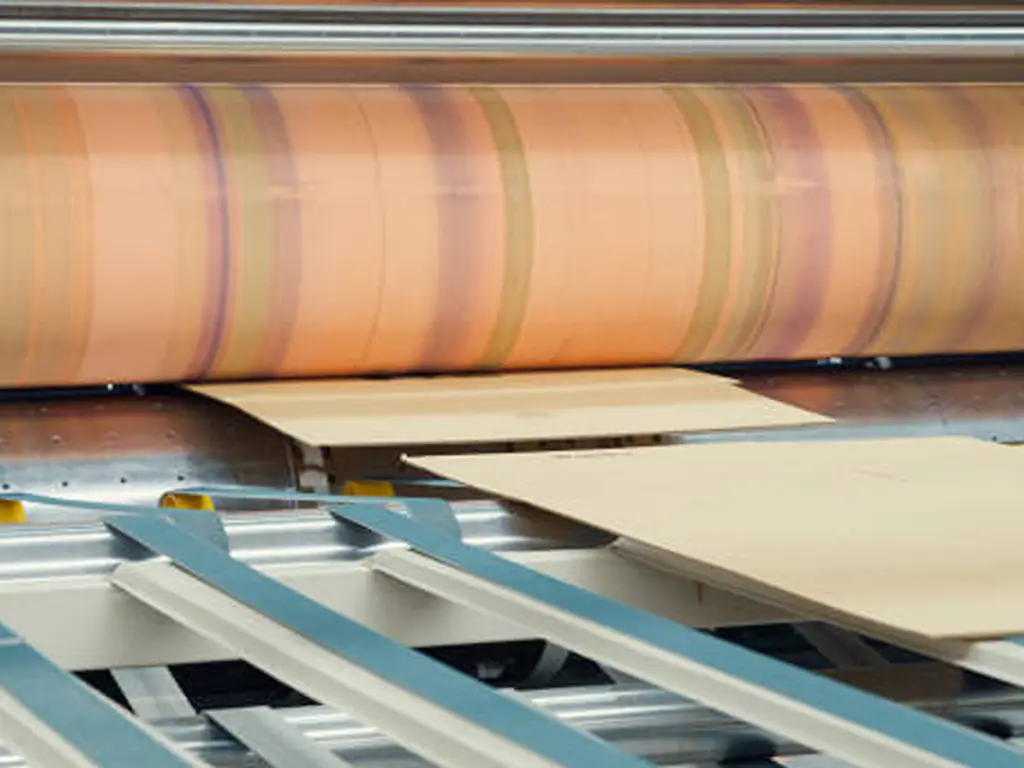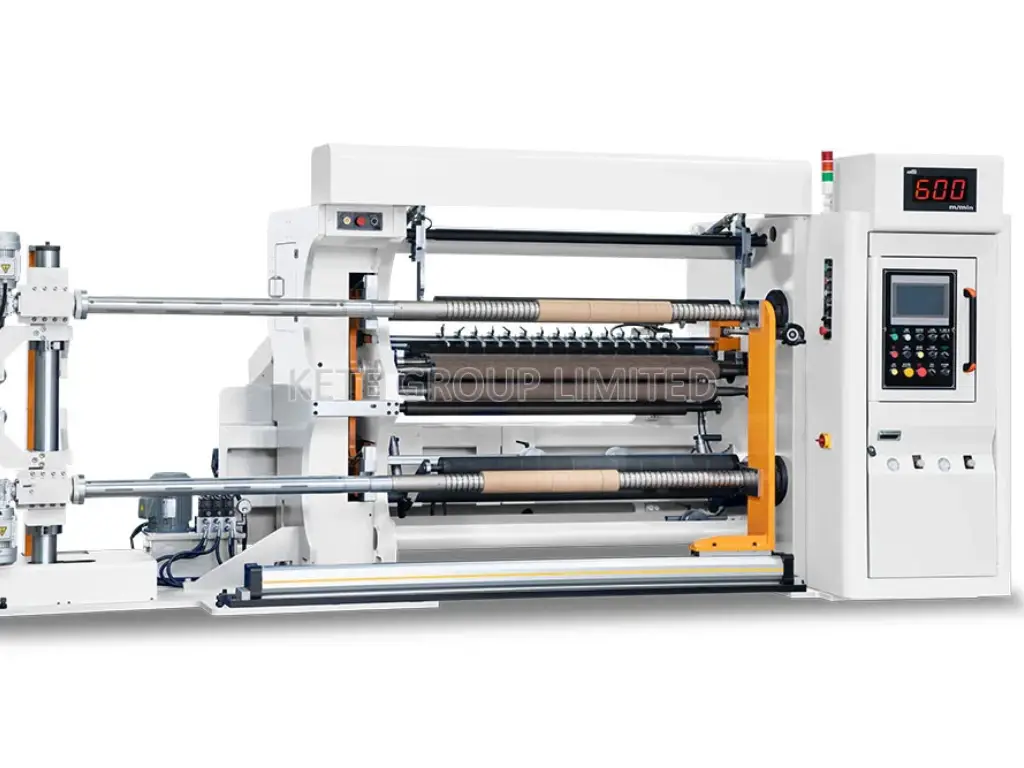
Introducción a la bolsa de plástico
The use of plastic bags has become an integral part of our daily lives. From zipping to the grocery store to wrapping up our sandwiches, these different types of plastic bags are the real deal! We’ve got the zippy ones, the big trashy ones, and even the earth-hugging biodegradable plastic bags. Ever wondered how is a plastic bag made? The journey from tiny plastic pellets to a finished bag is a fascinating industrial process, centered around a technology known as Blown Film Extrusion. In this guide, we’ll break down exactly how to make plastic bags.
7 Steps: How to Make Plastic Bags?
¿Alguna vez se ha preguntado cómo cobra vida una simple bolsa de plástico? El proceso de fabricación de una bolsa de plástico implica una serie de intrincados pasos, cada uno de los cuales contribuye a la forma final de la bolsa. Veamos más de cerca el proceso de producción del plástico.
| Paso | Descripción |
| En bruto Material Transformation | Raw polymers (derived from natural gas or petroleum) are transformed into plastic resin pellets through heating and pressure in machines like pelletizers. |
| Extrusion Process | The resin pellets are fed into an extruder, melted, and forced through a circular die to form a continuous plastic film tube. |
| Blown Film | The film tube is inflated with air, like a balloon, to stretch it to the desired thickness. |
| Cooling and Setting | The plastic film is rapidly cooled using air or water cooling systems to solidify it and ensure uniform thickness. |
| Coloring and Additive Mixing | Dyes and additives (e.g., UV stabilizers, tear resistance agents) are mixed into the molten plastic to give the film color and enhance its properties. |
| Corte y sellado | The plastic film is cut into specific lengths, and the bottom is heat-sealed to form the bag’s base. |
| Printing (Optional) | Flexographic printing is used to apply logos, text, or designs onto the bags. |
| Quality Control and Testing | The bags undergo rigorous tests for thickness, strength, UV resistance, and other properties to ensure they meet quality standards. |
| Envasado y distribución | The finished plastic bags are counted, stacked, packaged, and prepared for shipping to retailers or consumers. |
De polímeros a gránulos de resina: La transformación
Polymers are the raw materials, often coming from natural gas or crude oil, that are the starting point for your plastic bag. Before they become the bags that carry your groceries or your lunch, they must first undergo a significant transformation. These polymers are turned into what we call plastic resin pellets. Think of these plastic pellets as the fundamental building blocks; they are the basic units that will be used to create a durable and functional plastic bag..
Now, how does this metamorphosis happen? The process involves a series of controlled stages. First, the raw polymers are subjected to carefully controlled heat and pressure in specialized machines like pelletizers. The quality of these initial pellets directly impacts the final product, which is why the entire manufacturing line, from the extruder onwards, must be robust. This breaks down their complicated chains into simpler, more manageable forms. This process yields small, cylindrical pellets. These pellets are the go-to material for the next steps because they’re consistent and easy to work with.
These aren’t just any old pellets. They are precisely formulated with additives like colorants or UV stabilizers. So, when you see a plastic bag that’s a particular color or extra tough, it’s all thanks to the special recipe of these resin pellets.
In short, this initial stage of turning polymers into resin pellets is critical for the steps that follow. It sets the mood and prepares the stage for the main event. You can’t just skip it and expect a great show.
The Extrusion Process: Crafting the Plastic Film from Extruder
The film extrusion process is where the crucial transformation begins. The resin pellets are loaded into an extruder, a machine that’s about to give our plastic bag its shape.
This is the heart of the manufacturing line. In the industry, this entire stage is called the Blown Film Extrusion process. The molten plastic is forced through a circular die, which shapes it into a continuous tube of thin plastic film. As the tube exits the die, it is pulled upwards and inflated with air, like a long balloon. This stretching is what creates the thin, strong film.
Cuando el plástico sale de la extrusora, se enfría rápidamente con aire frío o agua. Este enfriamiento repentino solidifica el plástico, convirtiéndolo en una película. El grosor de esta película puede ajustarse en función de las propiedades deseadas de la bolsa final. ¿Necesita una bolsa resistente para transportar ladrillos? Necesitará una película más gruesa. ¿Busca una bolsa ligera para llevar un bocadillo? Una película más fina le servirá.
Pero un dato curioso: la película de plástico no es plana cuando sale de la extrusora. En realidad, es tubular. Si alguna vez ha observado que la mayoría de las bolsas de plástico de la compra no tienen costuras laterales, ésta es la razón. Se cortan a partir de un tubo continuo de plástico, lo que garantiza su resistencia y durabilidad.
El proceso de extrusión es un testimonio de las maravillas de la fabricación moderna. Es una mezcla de ciencia, ingeniería y un toque de arte, que garantiza que la película de plástico sea la adecuada para el fin al que se destina.
Colorear y añadir aditivos
Una vez que tenemos nuestra lámina de plástico, es hora de darle personalidad. Mientras que el color natural del polietileno es algo translúcido, las bolsas de plástico vienen en infinidad de colores, desde opacos hasta transparentes. ¿Cómo se hace? Entrando en el mundo de los tintes y aditivos.
Los tintes se mezclan con el plástico fundido antes de extruirlo, lo que garantiza un color uniforme en toda la película. Tanto si quieres un rojo vibrante como un azul sutil, todo es cuestión de conseguir la mezcla adecuada de colorantes.
But color isn’t the only thing added to our bags. Additives play a crucial role in enhancing the final plastic bag properties. Need a bag that can withstand sunlight without degrading? UV stabilizers are added. Want a bag that’s more flexible or resistant to tears? There are additives for that too. This allows the bag’s final properties to be tailored for its intended use.
Enfriar y fijar la película
Una vez que el plástico sale de la extrusora, se encuentra en un estado algo vulnerable. Está caliente, es maleable y aún no tiene su forma final. Aquí es donde entra en juego el proceso de enfriamiento. El enfriamiento no sólo consiste en bajar la temperatura, sino también en garantizar que el plástico se endurezca correctamente, manteniendo el grosor y la resistencia deseados.
Air-cooling systems blow cold air onto the film, solidifying it rapidly. In some cases, water cooling systems are used, where the film is passed over chilled rollers. This rapid cooling is crucial. If the film cools too slowly, it can become uneven or develop imperfections. Think of it like chocolate; if it doesn’t cool uniformly, it can become grainy or discolored. The efficiency of the cooling ring is a major factor in production speed. A well-designed air ring, for example, provides a uniform airflow that cools the bubble evenly, preventing weak spots and allowing the machine to run faster without sacrificing quality.
Durante esta fase, los rodillos también desempeñan un papel fundamental. Garantizan que la película se estire uniformemente, evitando arrugas y pliegues. Es un delicado equilibrio de temperatura y tensión, que garantiza que la película esté en su punto.
Corte y sellado
With our film set and ready, it’s time to transform it into recognizable bags. But how do we go from a continuous roll of plastic film to individual bags? The answer lies in precision cutting and sealing. Before the bags are cut, the rolls of plastic film are often sent to a printing press. Here, logos, text, and graphics are printed onto the film using a process called flexography, which is fast and efficient for large-scale production.
El film se introduce en máquinas que lo cortan a intervalos regulares, determinando la longitud de la bolsa. Pero una bolsa no es sólo longitud; necesita una base. Aquí es donde entra en juego el sellado. La parte inferior de cada sección cortada se sella mediante calor. Este calor fusiona el plástico, creando una fuerte unión que forma la base de la bolsa. Es esencial que este sellado sea robusto; es lo que da a la bolsa su capacidad de carga.
La parte superior permanece abierta, lista para su uso. En algunos casos, se añaden características adicionales, como asas o cremalleras, que mejoran aún más la funcionalidad de la bolsa.
Control de calidad: Pruebas de espesor, resistencia y otras propiedades deseadas
El control de calidad es el héroe anónimo en el mundo de la producción de bolsas de plástico. Al fin y al cabo, nadie quiere una bolsa que se rompa a la mínima presión. Entonces, ¿cómo se consigue que la calidad de las bolsas de plástico sea constante? Mediante pruebas rigurosas.
Cada lote de bolsas se somete a una serie de pruebas. Se mide el grosor de las bolsas para garantizar su uniformidad. Al fin y al cabo, una bolsa demasiado fina podría no aguantar, mientras que una demasiado gruesa podría ser un desperdicio.
Las pruebas de resistencia también son primordiales. Las bolsas se llenan y estiran hasta sus límites, para garantizar que cumplen las normas establecidas por los fabricantes. Otras pruebas pueden incluir la exposición a los rayos UV (para comprobar la resistencia al daño solar) o pruebas de humedad (para verificar la capacidad de la bolsa para repeler el agua).
Envasado para distribución
Una vez que las bolsas superan con éxito las pruebas, están listas para salir al mundo. Pero primero hay que empaquetarlas. Las máquinas cuentan y apilan las bolsas, preparándolas para su distribución. A continuación se empaquetan, listas para ser enviadas a los minoristas o directamente a los consumidores.
Tipos de polímeros utilizados: ¿De qué están hechas las bolsas de plástico?
¿Alguna vez se ha preguntado de qué están hechas las bolsas de plástico que tiene en la mano? Pues no es usted el único. Los tipos de polímeros utilizados en estas bolsas son algo más que un simple trabalenguas: son la espina dorsal de los múltiples usos de la bolsa de plástico.
Polietileno
Let’s start with the big one: polyethylene. It’s the most common material you’ll find in plastic bags. Originating from natural gas and petroleum, polyethylene goes through a whole manufacturing process to become the bags we use daily. There are different types, like low density polyethylene (LDPE), high-density polyethylene (HDPE), linear low-density polyethylene(LLDPE).
LDPE is what you’ll find in those softer, more flexible, and typically more transparent bags—think produce bags at the grocery store.
HDPE is sturdier, more opaque or translucent, and is what you’re holding when you’ve got a bag full of canned goods.
Linear low-density polyethylene (LLDPE) is tougher and has a higher tensile strength than LDPE. It’s often used in stretch films, toys, and some flexible containers.
Polipropileno
El polipropileno es otro de los grandes protagonistas del mundo de las bolsas de plástico. Éste tiene un punto de fusión más alto, por lo que es el más adecuado para todo lo que necesite soportar algo de calor. A menudo encontrarás polipropileno en las bolsas de la compra reutilizables. Además, es hidrófobo, lo que significa que repele muy bien el agua.
A Note on Additives and Colorants
It’s important to know that these base polymers are often just the starting point. To achieve specific properties, manufacturers mix in various additives. For instance, color masterbatch (a concentrated pigment) is added to create bags of any color, UV stabilizers are included to prevent the plastic from degrading in sunlight, and anti-static agents can be used to stop bags from clinging together. These additions are what give a plastic bag its final look, feel, and specific function.
So, whether it’s polyethylene or polypropylene, and with a little help from additives, each bag has its own set of perks that make it the right fit for different jobs.
Los inmensos beneficios de la bolsa de plástico
There’s a whole bunch of reasons we can’t live without plastic bags. But let’s just chat about the highlights and key plastic bag properties that make them an important part of our everyday life.
| Ligero | Una de las ventajas más significativas de las bolsas de plástico es su ligereza. Esta característica no sólo facilita su transporte, sino que también reduce los costes de transporte. Cuando se envían productos, cada gramo cuenta, y las bolsas de plástico ofrecen una solución ligera pero resistente que puede suponer un importante ahorro de costes. |
| Duradero | Las apariencias engañan. A pesar de su delgada estructura, las bolsas de plástico son increíblemente duraderas. Gracias al polietileno de alta densidad (HDPE) y al polietileno de baja densidad (LDPE) utilizados en su proceso de fabricación, estas bolsas pueden soportar un peso considerable sin romperse. Esta durabilidad las convierte en la opción preferida de las tiendas de comestibles y los comercios minoristas. |
| Resiste la humedad | Otra característica destacable de las bolsas de plástico es su capacidad para resistir la humedad. Tus compras se mantienen secas aunque fuera llueva a cántaros. Es la magia del plástico. Materiales como el polipropileno son especialmente eficaces a la hora de mantener a raya la humedad, por lo que las bolsas de plástico son ideales para el almacenamiento de alimentos y otras aplicaciones sensibles a la humedad. |
| Versatilidad | Las bolsas de plástico tienen todo tipo de formas y tamaños, lo que las hace increíblemente versátiles. Tanto si compra ropa como comestibles o productos electrónicos, hay una bolsa de plástico diseñada para satisfacer sus necesidades. La variedad se extiende a características como asas, bolsas de almacenamiento con cremallera e incluso el tipo de cierre, ofreciendo una gama de opciones tanto para consumidores como para empresas. Además, el envasado bag-in-box se utiliza a menudo para líquidos como el vino de caja y tamaños institucionales de otros líquidos. Este tipo de envase ofrece una forma cómoda y eficaz de almacenar y transportar líquidos, reduciendo la necesidad de bolsas de plástico de un solo uso. |
Estas ventajas ponen de manifiesto la inmensa utilidad de las bolsas de plástico, que las convierten en algo más que una simple comodidad: son un producto de ingeniería y diseño bien pensados.

Sustainability in Production: What Happens to Waste Material?
El detrás de escena ecológico Cuando se fabrican bolsas de plástico, hay un poco de acción entre bastidores que no llega al corte final. Nos referimos a los recortes, a las bolsas que no están bien y a las sobras que no acaban de salir de las máquinas. Pero en el mundo ecológico de hoy, no nos limitamos a esconderlos bajo la alfombra.
Recycling: The Green Comeback A good slice of this backstage waste is ready for an encore. Off-cuts and those bags that didn’t pass the audition can be gathered, can be gathered, melted down, and reprocessed into new bags. This recycling loop is an efficient way to reuse raw materials in plastic production, cutting down the need for fresh polymers. It’s not just eco-friendly; it’s also kind to the manufacturer’s wallet.
Disposal: The Thoughtful Exit But let’s face it, not every piece of waste is ready for a second act. Some, due to mixed materials or other issues, just can’t be recycled and reused. But even these get a dignified exit. Instead of being sent directly to a landfill, they’re often incinerated in a controlled setting, keeping the environment’s best interests at heart. And the cherry on top? Some top-notch facilities turn the energy from this process into electricity. Now that’s a bright idea!
Conclusión
From the initial melting of polymer pellets to the final cut and seal, understanding how a plastic bag is made reveals a process of precision engineering. The process of blown film extrusion, followed by automated conversion, transforms simple raw materials into a durable and versatile everyday item. Now that you’ve seen the intricate steps involved, you have a deeper appreciation for the technology and science behind this ubiquitous product.
Ponga en marcha su empresa de bolsas de plástico con KETE
Understanding how plastic bags are made is the first step. Bringing them to life requires precision machinery engineered for efficiency and quality. The blown film extruders, printing presses, and bag-making machines are all critical components of a successful production line.
If you’re considering entering the plastic bag industry or want to upgrade your current operations, having the right technology partner is key. At KETE, we don’t just supply machines; we provide complete solutions tailored to your production goals. Contact our experts for a technical consultation or to get a quote on a production line that fits your needs.
FAQS
Q: How much of plastic bags are actually recycled?
A: Although plastic bags are technically recyclable, less than 10% of them are actually recycled. Most end up in landfills, incinerators, or the environment due to contamination, mixed materials, or the lack of specialized recycling facilities.
Q: What are plastic bags actually made of?
A: Plastic bags are typically made from high-density polyethylene (HDPE) or low-density polyethylene (LDPE), both of which are petroleum-based plastics. These materials are lightweight, durable, and moisture-resistant, making them ideal for packaging and retail use.
Q: Why can’t Ziploc bags be recycled?
A: Ziploc bags are often made of recyclable polyethylene, but they’re frequently contaminated with food residue, oils, or moisture, which makes them difficult to process through standard curbside recycling programs. Additionally, their zipper seals can include mixed materials. However, some grocery stores offer drop-off bins specifically for clean, dry plastic films, including Ziploc bags.
Q: How many years does it take for plastic bags to decompose naturally?
A: Plastic bags can take 500 to 1,000 years to break down in the environment. Even then, they don’t fully biodegrade — they fragment into microplastics, which persist in ecosystems and pose long-term threats to wildlife and human health.

